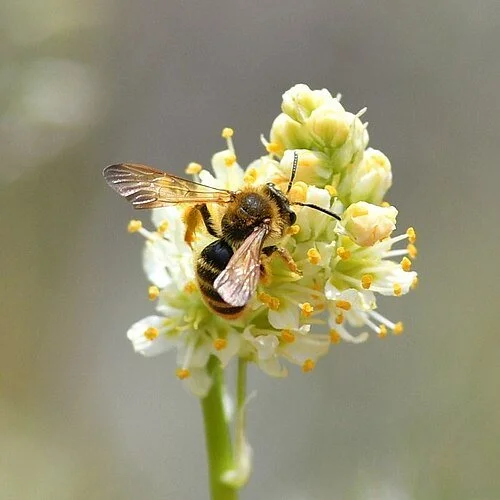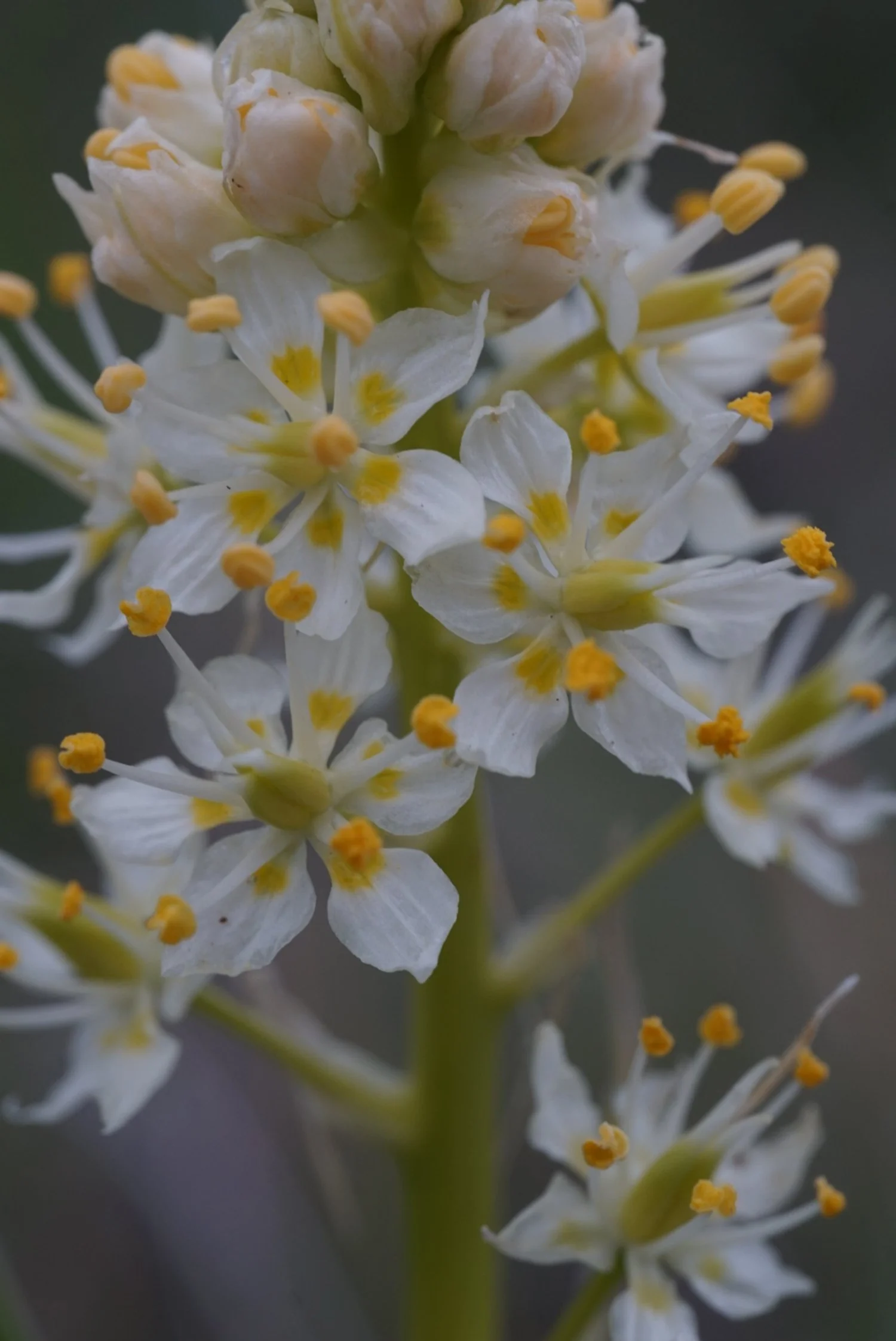Death Camas Awaits Her Bee
I left the Dakota Partnership Bison Ranch early September of last year after spending a little over three weeks here, dodging hurricane-force winds and triple digit temps. Van-accessible shade trees are scarce, so I would motor out to a hot spring to soak my broken ankle or hobble into a dog-friendly cowboy bar to nurse a $4 top shelf gin and tonic and air conditioning for a few hours.
My western cowgirl fantasies were tickled when an elder lady bartender squinted one eye at me and said, “You’re not from around here… are you, Honey?” The small sea of red hats at the bar all turned to look. “No,” I eked out, “I’m just here for a few weeks studying bees at a bison ranch just north of here.” The crowd erupted with glee and we were all instant best friends. Nearly everyone bellied up to the bar had been employed by the ranch at some point in the last 30 years and “bees” seem to be the magic word to start a connection with anyone, despite our team colors.
Since I left, western South Dakota received a smidge of the precipitation it needs and deserves. Until the day I got here! I’m now dodging raindrops and frigid temps, wrapping myself in a combination of fleece, wool, down, and/or nylon ripstop. I’ve been sitting (nearly) idol for the last six days waiting for bees to emerge and take advantage of the vast array of wildflowers that are waiting for them.
One such plant that is covering the plains is meadow (or plains) death camas (Toxicoscordion venenosum). The scientific name is giving toxic venom vibes, and it’s not wrong! As an avid forager and lover a wild onions, this is one to watch out for. Ingestion of its bulb and green leaves will wreak havoc on your gastrointestinal, respiratory, nervous, and musculoskeletal systems 💀 though you would have to have a whole giant salad of its leaves to actually keel over and die from it, one bulb could be lethal.
Livestock such as sheep, horses, and pigs, however, can easily succumb to its toxins through any part of the plant – and often do.
Bison, however, seem to completely avoid it. I’ve found large untouched patches of it where the bison are actively grazing here on the ranch.
This is a boon for one (and only one) particular bee that happily coexists here on the plains with the bison – the death camas miner bee (Andrena astragali).
Often flowers with toxic bulbs and leaves will still produce nectar and pollen that is toxin-free in order to receive adequate pollination services. But the prairie death camas oozes zygacine, a deadly alkaloid neurotoxin, even into the flower parts. It’s not uncommon to see a ring of dead insects around a death camas plant. Studies have shown the nectar and pollen to be deadly to mason bees (Osmia) and honey bees (Apis mellifera).
“If not friend, why friend shaped?”
- Dying fly under a death camas
The death camas miner bee is large in size compared to other bees in the same genus, has glassy reddish wings, and has a black abdomen with creamy yellow stripes of fuzz.
She has an interesting relationship with her host flower, as prairie death camas is only pollinated by her and she will only visit it – they require each other to survive. Studies show that without their bee, death camas plants will self-pollinate, but only a fraction of the plants receive enough pollination to reproduce and survive.
The scientific term for this is “obligate mutual specialization” and is rare in the bee and plant world. The details on how this relationship evolved are still to be determined, but their need for each other is clear.
When I witness climate change-induced phenomena such as this – e.g. spring rains being heavier than normal and approximately 40 days late, making it impossible for the bee to emerge from the ground to pollinate her flower before it gives up and wilts – I see proof of what has been named “phenological mismatch.”
It’s hard to feel like there isn’t much I can do. I can’t stop the rain, I can’t dig the bees from the soil and warm them up, I can’t risk my own health and hand pollinate the flowers. But then I remember that showing up and witnessing and reporting is something.
This is a poem I wrote while out in the field last spring:
Why do we monitor?
To witness, to watch, to count, to compare;
To discover;
To make sense;
To tell stories;
To inspire care.
The more time I spend on the Great Plains with these flowers and their bees, I’m thankful for the lessons on impermanence, resilience, and patience.
Thank you for reading.
Resources:
A rare relationship between death camas and death camas miner bees
Co-dependency between a specialist Andrena bee and its death camas host, Toxicoscordion paniculatum
Collecting death camas for our “Bee Habitat in Cyanotype” project




